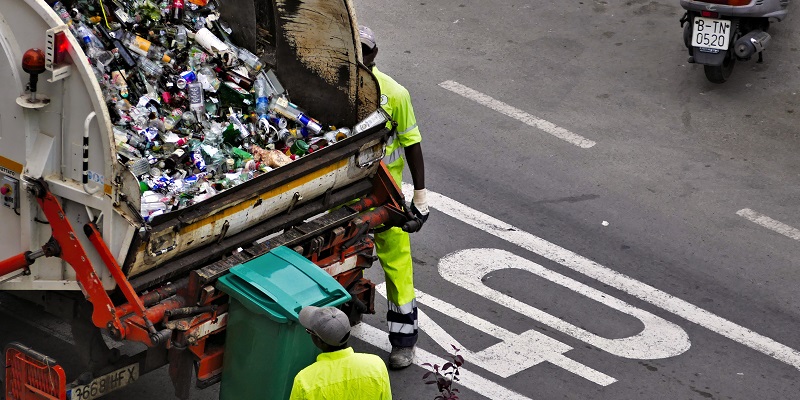The Growing Challenges of Plastic Waste Management
Despite being an environmental hazard that is practically impossible to dispose of safely, plastic remains one of the world’s most versatile and widely used synthetic materials. It is lightweight, cheap, and easily applied for different uses – packaging materials, insulation, or as a raw material in manufacturing industries. Global plastic production grew exponentially from 2 million tonnes in 1950 to 460 million in 2019.

Only 15% of the world’s plastic is recycled. The rest ends up in landfills, is collected for incineration, or dumped in our streets, rivers, and oceans. This is becoming a major ecological problem since none of the disposal methods are safe for the environment. Being slow to break down, any plastic that is not incinerated will remain in landfills and our water bodies for several hundred years, posing a threat to soil quality and plant, animal, and marine life. It is thought that by 2050, the world’s oceans will contain more plastic than fish.
The incineration of plastic waste releases 16 million tonnes of greenhouse gases into the atmosphere every year, including toxins and heavy metals like Dioxins and Mercury. In addition to contributing to climate change, these emissions pose a significantly increased risk of cancer and cardiac, respiratory, neurological, and reproductive disorders. Emissions from plastic incineration are set to rise to an estimated 309 million tonnes by 2050.
It’s Raining Plastic!
Microplastics have long been recognised as a threat to freshwater and marine life, but recent studies have revealed their presence in the atmosphere. The great danger with airborne microplastics is that they can travel vast distances and pollute otherwise pristine areas when it rains. For example, in 2019, researchers found microplastics in the Pyrenees mountains that had arrived via rain and snowfall. Paris predicts around 3,975 kg of plastic rain will fall on the city in September 2023.
Scientists are still working to calculate the true amount of microplastics in the air, and the long-term health and environmental effects remain to be seen, but the fact that plastic pollution has now become inextricably linked to climatic cycles is an urgent signal to cut down on plastic use, increase clean-up and recycling efforts, and develop industrially viable, green alternatives to plastic.
If Not Plastic, Then What?
Plastic is everywhere – in our gadgets, homes, workplaces, and increasingly in our atmosphere, soil, rivers and seas. Demand for plastics will continue to rise, but how can we avert the ecological crisis it promises to bring? Bioplastics could provide a solution. Unlike traditional plastic from fossil fuels, these are made using renewable resources like plant material, sugars, and starches.
Much work is being done to develop an environmentally safe alternative to plastic, and PHA (Polyhydroxyalkanoates) is one of the most promising bioplastics because it is 100% compostable. For example, traditional plastic straws can take up to 200 years to degrade in soil, whereas straws made from PHA will naturally degrade within 90 days. It is also one of the only bioplastics to efficiently break down underwater. Being denser than water, PHA is more likely to sink to the seabed, where the soil helps speed up the degradation process, breaking it down completely within 180 days.
The Way Forward
While plastic alternatives might reduce demand for traditional plastic, it is unlikely that they will ever completely replace it. Solving the plastic problem may seem like an impossible challenge. Still, it can be done if governments, industries, and individuals take earnest steps to reduce dependence on plastic and focus more strongly on reusing and recycling plastics as much as possible.



